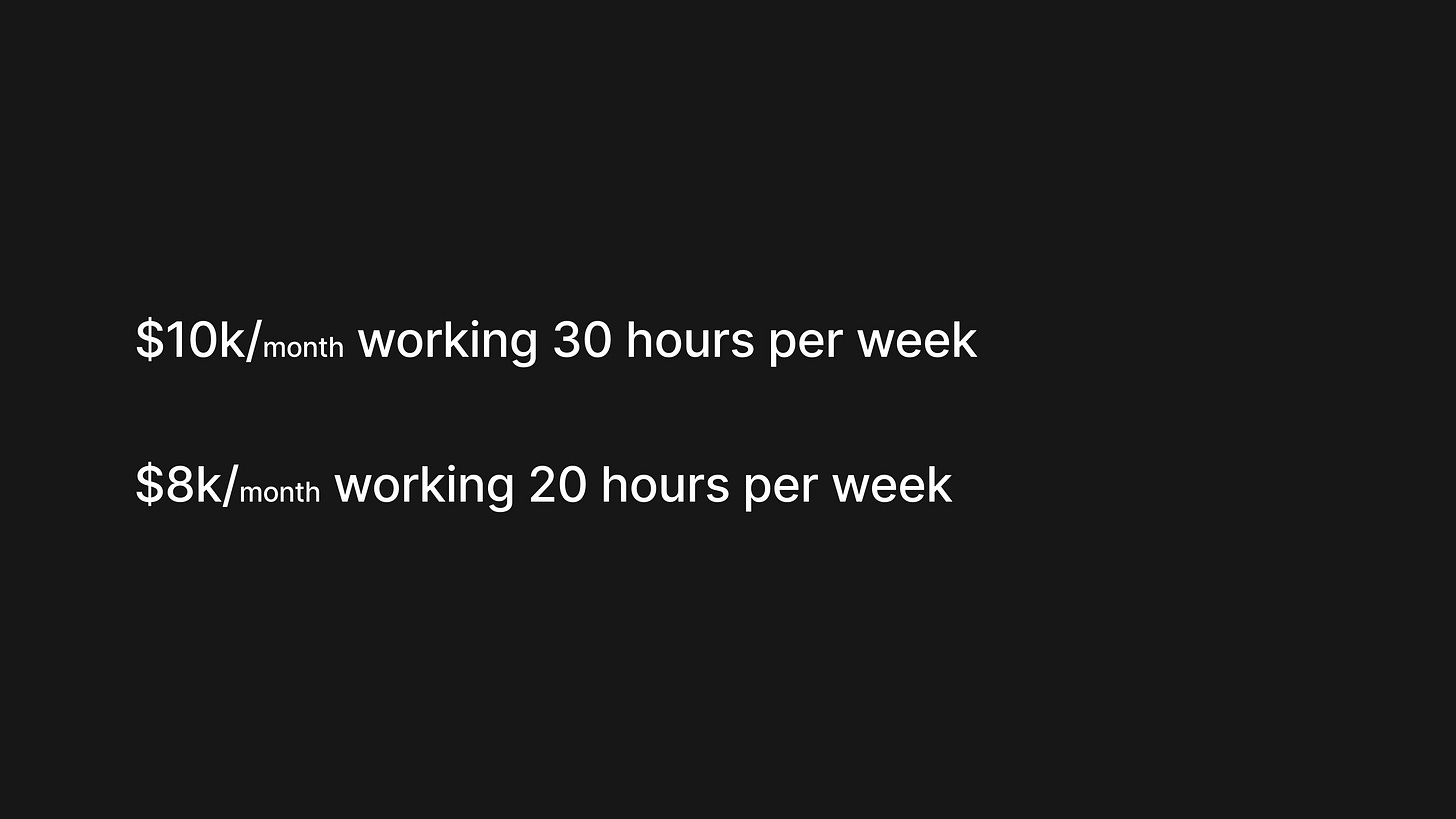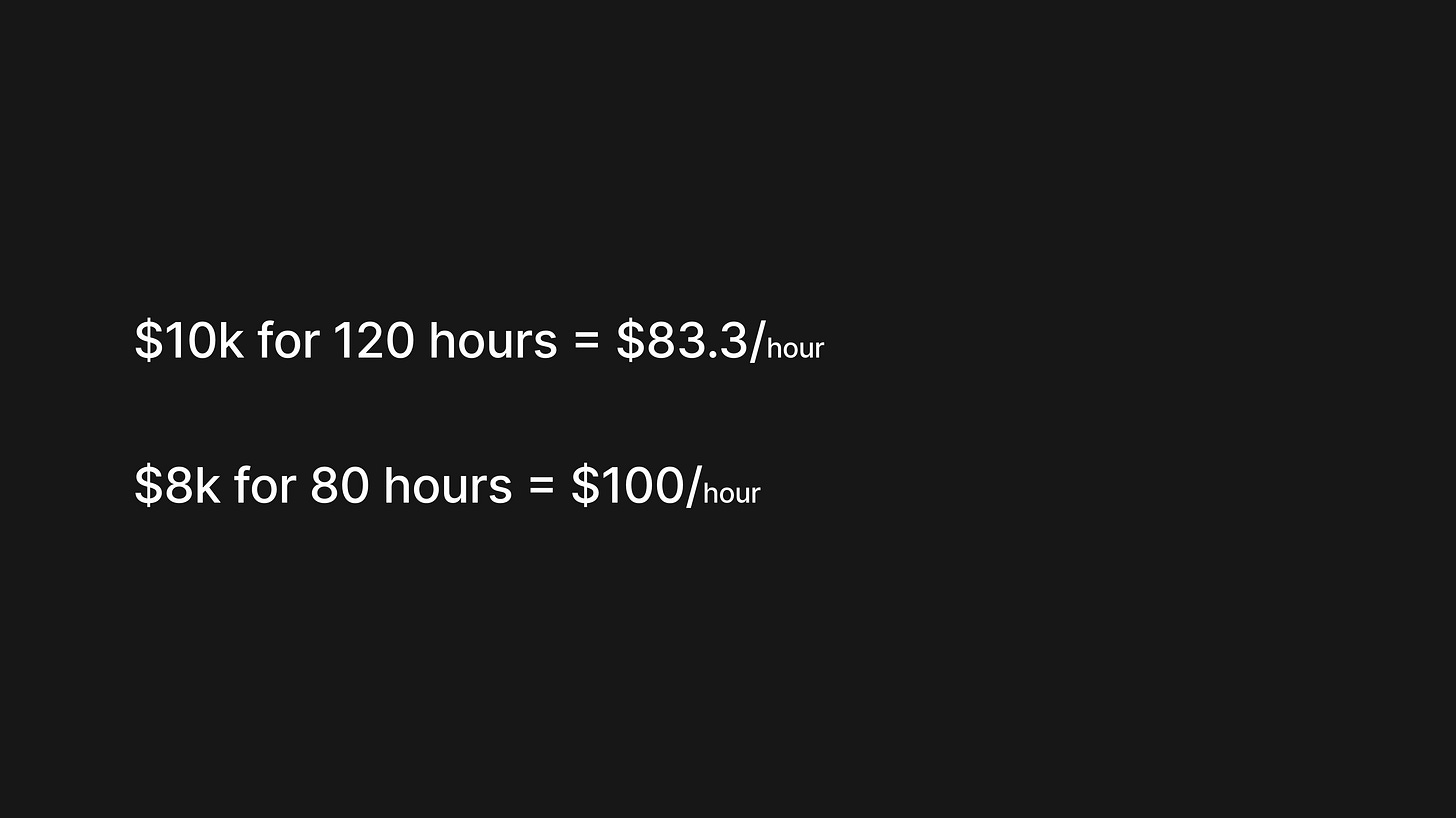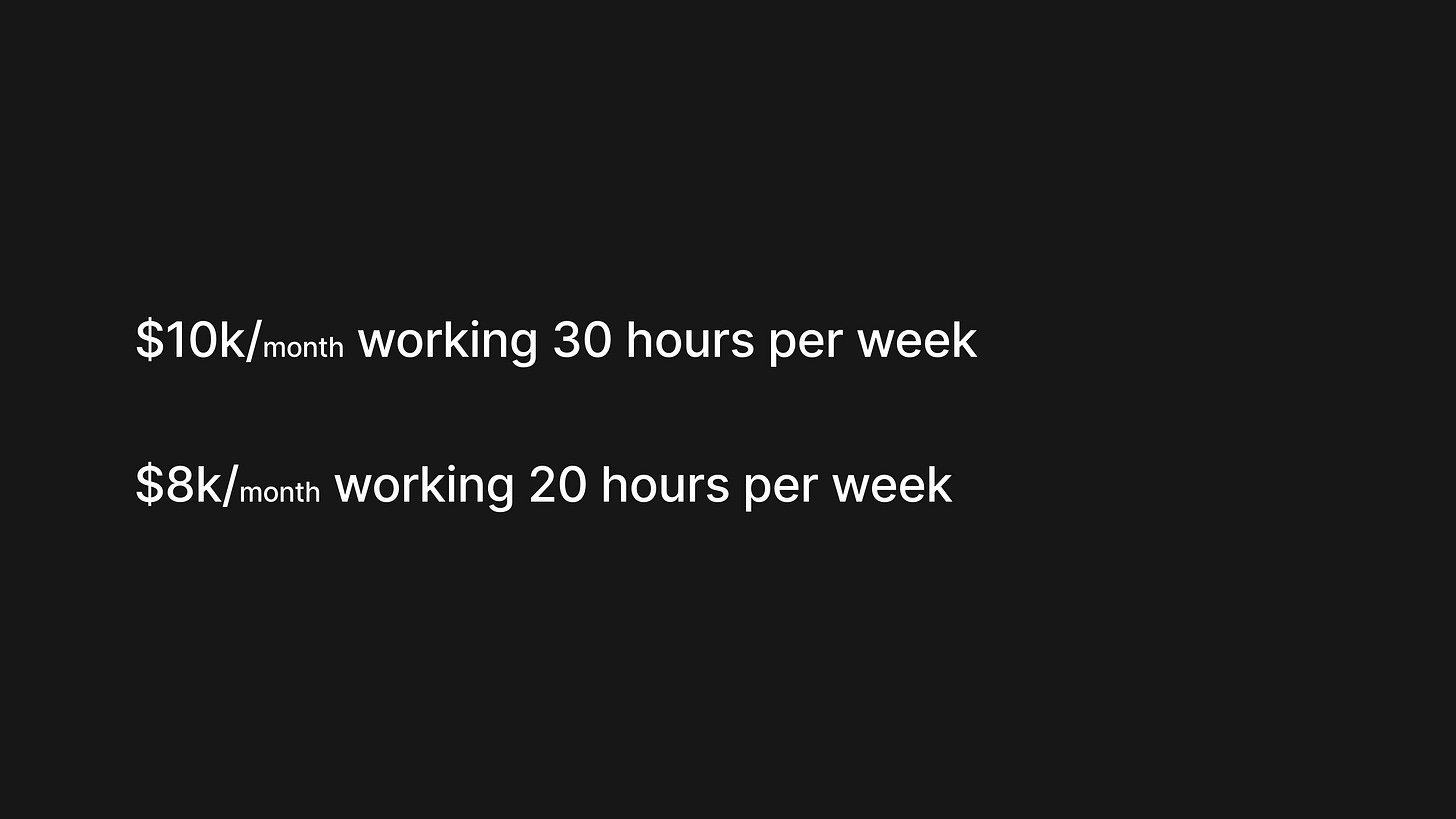Guide #7: Why you NEED to calculate your hourly rate
The mindset shift needed for building a Tiny Empire
One of the biggest mindset shifts you need to make from focusing on building a large business to building a Tiny Empire is to focus on time efficiency. I cannot state the importance of this enough. It’s all about optimizing your time and putting your time to the best possible use.
Think of your time as an investment
You may have heard of the term “ROI” which stands for “Return on Investment” and is used when people are trying to calculate what type of return they will get from a financial investment. I also think about my time in terms of ROI. What kind of return am I getting for using my time in specific ways?
The first way I think about this is that although I’m not a freelancer or employed, I think about my time as an hourly rate. The reason for this is that it takes into account both money AND time. Rather than focusing on growing overall revenue, my goal is to increase my hourly rate. I can do that by either increasing revenue, decreasing time, or both. Let’s look at a couple of examples. Which of the following options is better:
If we assume 4 weeks per month, this works out as
You can think of this that you have exchanged 120 hours of your time for $10k, or 80 hours of your time for $8k. You have effectively made a deal with yourself, sacrificing time for financial gain. But when we break these down we get:
In this case, making $8k is a better deal than making $10k. The extra 40 hours you are working to make the additional $2k is reducing your hourly rate. If you’re able to find ways to reduce your time spent working further, you can push your hourly rate up further. Let’s say you’re able to continue making $8k per month, but you reduce your total monthly hours to 60 hours (15 hours per week). Your hourly rate would jump up to $133/hour. By reducing your time in meaningful ways through effective processes, automation, no-code, AI etc you’re making your time more valuable.
As well as being a useful measure of how well you are spending your time, this is also incredibly useful as you now have a very accurate measure of how much your business makes for every hour that you put in. This means that you can hire freelancers and pay for tools that can do any of your daily tasks that cost less than $133/hour in this case. Knowing this, means you can outsource even further through these methods, which will reduce your profits, but will reduce your time investment at a greater rate than the profits, which will in fact increase your hourly rate even further.
Let’s go back to the earlier example:
Let’s say these 2 options are from the same business. If the person works 20 hours per week, they end up making $8k per month, but if they work an extra 10 hours per week, they only make an extra $2k and their hourly rate drops. You may then think, well I’m working just as hard for those extra 40 hours each month, so why would my hourly rate become lower? This is where we can use the hourly rate to work out the value of individual tasks. Next week, we’ll look at how we can think about optimizing our time on a more granular level by understanding the monetary value of our tasks and how to become laser focused on those that generate the greatest return on investment. Subscribe here if you’re not already.







